One thing I love about grad school is that we can choose our own research topics for class papers. Last semester, I wrote about two Laurence Olivier films: That Hamilton Woman (for my Heritage Film class) and Hamlet (for my British Cinema class). I mentioned them a few times at the vivandlarry.com facebook page while I was holed up in my room after Christmas trying to get them done by the deadline, and a few people expressed interest in reading them after they were finished. I was only willing to share if I got good marks on them, and luckily they both received distinctions (phew). So, without further adieu, a discussion of propaganda, performance, and heritage in Alexander Korda’s wartime propaganda film That Hamilton Woman.
That Hamilton Woman: Performance, Propaganda and Heritage in the British-American Biopic. ©
by Kendra Bean
Written for The Heritage Film MA course
King’s College London, January 2011
Britain needed a world war to coax its film industry into standing as a light on its own amongst the pantheon of national cinemas. When Britain entered the fight against Germany in late 1939, a new set of values emerged in British films that had been previously lacking. Principles such as realism, restraint, patriotism, and a sense of community, among others, were seen as constituting national identity.[i] Films made during the war years, including The Way to the Stars (Anthony Asquith, 1945), In Which We Serve (Noel Coward and David Lean, 1942), and San Demetrio London (Charles Frend, 1943), all display these traits. Alongside “realistic” films, scholar and historian Charles Barr points out another category of British films that also emerged during this time: the “heritage” film. Unlike their successors in the 1980s and 90s, which came under much scrutiny for being too nostalgic and portraying an outdated, bourgeois English lifestyle,[ii] “heritage” films of the war era were applauded for using Britain’s rich cultural legacy (plays, literature, history) and “the prestige weapon of the educated English voice on the soundtrack to deliver the words of Shakespeare or Dickens, or striking patriotic addresses” to unite wartime audiences at home, and educate audiences abroad. These films were not “simply recreating a bit of heritage in an inert, Trooping-the-Colour manner,” they were setting a prestigious standard in filmmaking that made an impact both at home and, most importantly, in Hollywood.[iii]
One such “heritage” film made during this time was That Hamilton Woman (Alexander Korda, 1941), a historical biopic about England’s revered Naval hero, Lord Horatio Nelson, and his romantic relationship with the notorious Emma Hamilton. The film has many of the “prestige” factors mentioned above: patriotism, a well-known historical account, and an educated English voice. It was also made in Hollywood rather than in England, and starred two of Britain’s most famous exports—Vivien Leigh and Laurence Olivier–thus giving it the advantage of box office appeal and being more easily distributed and exhibited in the crucial United States market.[iv] However, because it was made before the United States entered the war, the film’s strongly pro-British propaganda message had to be suppressed. Korda chose melodrama as the genre with which to accomplish this; the perfect mode for exploiting audience’s emotions and drumming up support for the English cause.
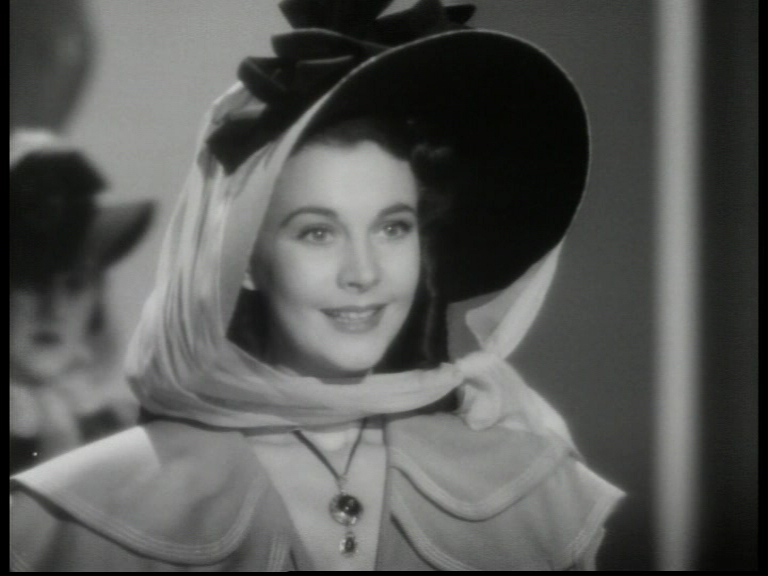
Much has been made of That Hamilton Woman as a melodrama and how it deals with history. In a 1992 article for Wide Angle, Ellen Draper accuses the film of outright “denying history at every level” through its use of melodramatic conventions, most notably the flashback.[v] More recently, Alison McKee countered Draper’s argument by suggesting that, rather than “denying” history, the use of melodrama “suggests an alternative way of constructing history,” in this case, using the gendered perspective of Emma Hamilton to tell the story of Horatio Nelson’s sacrifice for England.[vi] Both draper and McKee’s views can be supported as valid in their own respects. But, rather than read the film as an aversion to history or simply a conventional 1940s woman’s picture, I would like to suggest that the film uses a combination of melodramatic biography, star-powered performances, and propaganda to present “heritage” as a link to the political and social climate of 1941.
That Hamilton Woman was made under strenuous circumstances. Korda’s biographer Karol Kulik has notes that in late 1939, wartime technological and economic constraints in England had led Korda to pack up the his Technicolor epic fantasy The Thief of Bagdad, which was being filmed by Michael Powell at Denham Studios outside London, and move the entire production and crew overseas to the plentiful land of Hollywood where “location” shooting would appear more realistic. Known for being intensely supportive of England, his adopted country, Korda’s move was seen as treasonous by many in the British film industry.[vii] He needed a project that would prove that his intentions for being in Hollywood were pure and would benefit Britain during its time of crisis. Luckily for Korda, the British Foreign Office (the government department involved in promoting British interests abroad) had ascertained that history was useful for endorsing propaganda overseas.[viii] Thus, a project about Nelson and Emma Hamilton with obvious historical parallels to Britain’s current situation would be suitable. He had already secured a valuable working relationship with United Artists through the distribution of his film The Private Life of Henry VIII (1933), and would fund the picture using money from his own production company, London Films.[ix] As a director, Korda preferred his films to be centered on “historical figures who could attain mythological status, and who could tap a range of audience feelings about national identity, class consumption, and sexual pleasure.”[x] Many of the films he directed before 1940, including A Modern Dubarry (1927), The Private Life of Henry VIII, The Rise of Catherine the Great (1935), and Rembrandt (1936) illustrate these qualities, and That Hamilton Woman is no exception. Not only does it deal with legendary historical figures, it focuses on an adulterous relationship, socio-economic mobility, and the fate of a nation.
In her writings in British National Cinema, Sarah Street mentions that “home-grown” British stars “were often invested with a patriotic imperative as British national culture.”[xi] While both Vivien Leigh and Laurence Olivier began their film careers in Britain, the sense of patriotism and national identity was much more prevalent in Olivier’s star persona in at this time than it was in Leigh’s. Leigh had starred in a number of quota quickies and costume films for Alexander Korda back in England (including the 1937 film Fire Over England, directed by William K. Howard, also co-starring Olivier), but the first film she made in Hollywood was David O. Selznick’s Gone with the Wind (Victor Fleming, 1939), thus she was exposed to American audiences for embodying a wholly American character. In contrast, Olivier had become famous in Hollywood at the same time for playing the protagonist in a number of film adaptations of popular novels: Heathcliff in Emily Bronte’s Wuthering Heights (William Wyler, 1939), Maxim DeWinter in Daphne DuMaurier’s Rebecca (Alfred Hitchcock, 1940), and Darcy in the MGM adaptation of Jane Austen’s Pride and Prejudice (Robert Z. Leonard, 1940). Unlike Scarlett O’Hara, all of the characters that Olivier played on screen during this time are British. It can therefore be suggested that American audiences’ familiarity with Olivier as an actor rooted in English culture made him a suitable candidate to represent the patriotic voice of Britain through his on-screen portrayal of Horatio Nelson, more of which I will discuss later.
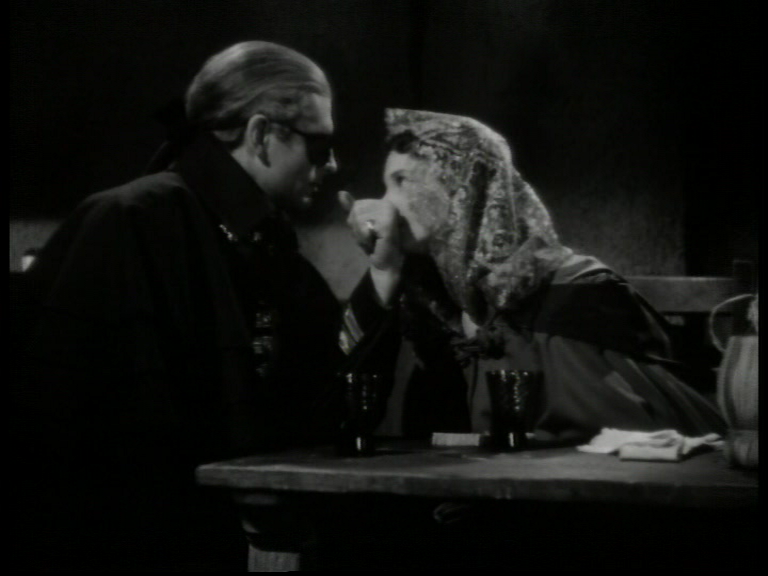
Prior to becoming successful film stars in America, both Leigh and Olivier had built up reputations on the West End stage. Olivier was hailed as an up-and-coming classical impresario, having played the lead in several Shakespeare plays at London’s Old Vic Theatre, including Hamlet, Henry V, and Coriolanus.[xii] Leigh, at this time, received more praise for her beauty than her acting talent.[xiii] On screen, however, it can be said that Leigh’s star outshone Olivier’s. Her Oscar-winning performance in Gone with the Wind guaranteed that thereafter she was often cast in parts that were reminiscent of Scarlett O’Hara both in personality and historical setting, be they American or British (Cleopatra in Caesar and Cleopatra (Gabriel Pascal, 1945), Anna in Anna Karenina (Julien Duvivier, 1948) are but two examples). Emma Hamilton is certainly one of these characters. One fan magazine of the period wrote, “Vivien Leigh is mighty happy about playing ‘the dear Emma.’ She didn’t expect to get a part with quite as much Scarlett O’Hara oomph for some time…”[xiv] Whether or not Leigh appreciated being typecast in such a way, her standing as a popular film actor coupled with Olivier’s stature as a theatrical performer and an embodiment of British literary heritage can be seen as loaning a certain amount of prestige to That Hamilton Woman.
Leigh and Olivier’s star personas also had a third component: they were involved in a highly publicized adulterous relationship off-screen. Like Emma Hamilton and Horatio Nelson, they were both married to other people when they began their love affair and weren’t given permission to legally marry until August 1940; just weeks before shooting began on the film.[xv] In her essay for the Criterion DVD edition of That Hamilton Woman, historian and critic Molly Haskell aptly observes: “Not coincidentally, of course, the adulterous passion that develops between the two lovers in the film mimicked the scandalous one that united Leigh and Olivier before the sometimes disapproving, more often infatuated, eyes of the world.”[xvi] Like their individual star personas, their personal relationship is inevitably reflected in their performances. This is most apparent in the love scenes. For example, the New Year’s Eve scene when Emma and Nelson share a passionate embrace on the terrace at the Hamilton Villa. Nelson tells her he must go back to England. Emma reluctantly mentions going to Egypt. As the bells in Naples chime midnight, they embrace passionately and Nelson tells her they will return to London together. Burying her face in his shoulder, Emma sobs, “I would have died if you left me here.” “Indeed,” Haskell writes, “It’s difficult to separate the ‘real Olivier’ and the ‘real Leigh’ from their parts here.”[xvii] Audiences at the time likely recognized the parallels between Leigh and Olivier’s reel life and real life, as well.
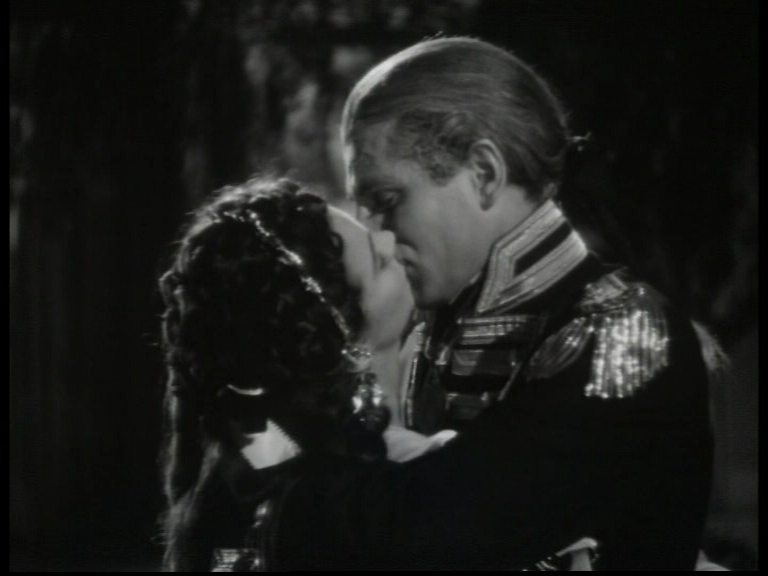
Genre and performance are interwoven from the very beginning of That Hamilton Woman. Both Horatio Nelson and Emma Hamilton were real people, and although the heart of the narrative is concerned with Nelson’s heroic exploits in saving Britain from the threat of Napoleon, it is Emma Hamilton through which the story is told. The film opens in Calais, France, where we see a downtrodden, old and withered Emma attempting to steal a bottle of wine from a local shop. She is quickly arrested, humiliated in public, and imprisoned for her crime. In jail she meets a young woman called Mary Smith who, not completely believing her cellmate’s claim to former fame, asks Emma to tell the story of her life. Emma, looking in a mirror, sadly says, “I know that face. For ten years it has looked back at me from different mirrors. It must be me.” Then, nostalgically, “But I always wait for the miracle that one time, just once more, when it will be another face that looks at me again. A face I knew before…” At this point the image of old Emma dissolves in a flashback to an interior shot of William Hamilton’s palatial villa in Naples, 1783, and in a voice-over, Emma says, “My life really began when I was 18.” Thus, we are transported to a specific significant point in Emma’s life where she is metaphorically “born” as the glamorous and famous figure known to history. By starting with Emma as an old woman, the film also cleverly builds up to the entrance of Vivien Leigh as she was known to audiences of the time: a glamorous and beautiful film star. When we finally see Emma/Leigh as a young woman, the contrast and impact of her entrance is more effective. The use of the female protagonist as the vessel through which history is told serves two specific purposes in this film: to showcase Vivien Leigh’s star power, and to set up Emma as the driving force behind Nelson’s salvation of England from the tyranny of Napoleon.
By portraying two such well-known historical figures, Leigh and Olivier may have had problems reconciling performance with audience’s perceived notions of the real people they were portraying. However, they had the great advantage of a rather large time gap between when the real Emma and Nelson lived and when the film was made. We know we are watching Vivien Leigh and Laurence Olivier acting as Emma and Nelson, and yet we suspend our disbelief and think of them as the real thing. This suspension of disbelief and the film plays with interweaving history and celebrity.
In order to clue audiences in to the fact that the actors on screen are portraying people that were once very much alive, historical biopics often use “signifiers of fact,” which usually take the form of a portrait of the biographee.[xviii] In That Hamilton Woman, our first glimpse of the young, glamorous Emma Hamilton is through a painting brought to William Hamilton which arouses much comment between him and the French Ambassador to Naples about the impossibility of such beauty existing in the world. This painting is not of the real Emma, but of Vivien Leigh posing as Emma based on an actual famous painting by George Romney[xix]. In a later scene, Laurence Olivier’s Nelson is admiring same painting of Leigh as Emma. Emma says, “Do you like it? It’s a Romney.” We then see Nelson looking at a painting of the real Emma, at which point she comments, “Yes, that’s me, too.” The layering of Vivien Leigh as Emma commenting on paintings of both herself and the real Emma Hamilton as if they are one in the same, as well as the observations of Emma/Leigh’s beauty allow the viewer to “admire the past life depicted while worshipping the very real current incarnation of this life on the screen, and off the screen.”[xx]
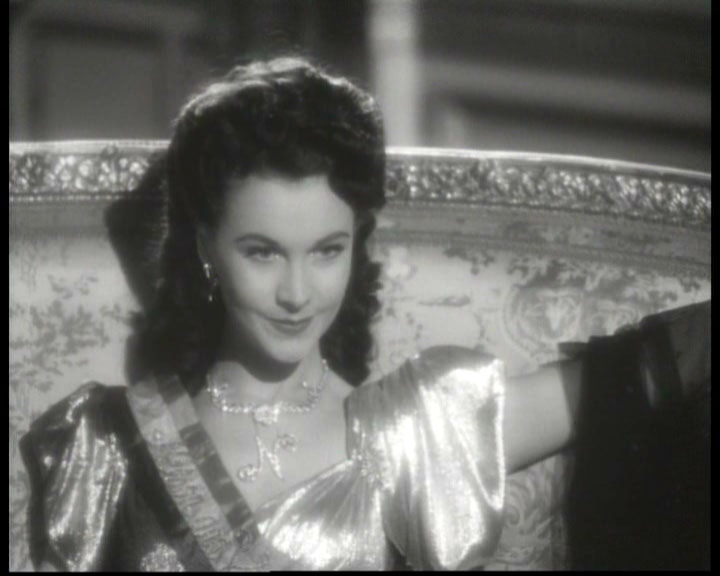
The real Emma Hamilton had a past that was deemed controversial even in her time.[xxi] She was a social climber, exotic dancer, and mistress to notable men in London’s high society, including William Hamilton’s nephew, Charles Greville who, we learn in the film, has more or less sold her into the hands of his uncle. Emma’s colorful past is referenced in the story but never shown. This was a constraint of the Hollywood Production Code, but it serves the purpose of presenting Emma’s “tale of success.”[xxii] At the beginning of the film, William tells the French Ambassador how Charles Greville “found” Emma, and about her famous, erotic Dance of the Seven Veils. “Don’t ask me what happened to her before,” William says. “The usual past. A poor little country girl wronged once then wronged again. The old story: lower and lower, but always up and up.” William then compares Emma to one of his Greek statues: “Look at this statue. 200 years in a Greek temple, then thrown to the mud by some Barbarian soldier. 2,000 years sinking lower and lower into the mud, then dug up by the plow of a peasant. Changing hands every year until at last it comes to its rightful place: into the hands of someone who understands the glory of it’s beauty…Because, you see, it is still beautiful—despite it’s past.”
In a later scene when Emma is eating dinner with William and learns that Charles Greville has passed her off into William’s hands precisely because of her lack of proper upbringing and monetary status, she declares passionately, “There’s nothing to be ashamed of. It’s true there were men in my life before Charles, I admit it, I made mistakes; I was young, I was stupid…and now I’m different. Not only my clothes, but inside. I’m good. I know I’m good!” According to Sue Harper, this particular scene “implies that the more variously a woman is loved, the greater her significance; she is not besmirched by sexual exchange,” and the idea that bad girls are relatable and invoke a sense of pleasure suggests “the change in wartime mores of their female audiences.”[xxiii]
Ellen Draper argues that melodramas “recreate famous historical events in a splendor of costume and staging.”[xxiv] This is certainly true in That Hamilton Woman. Narrative space and costume both play key roles in representing Emma’s transformation from a frivolous child, to a mature woman on whose shoulders the fate of a Britain rests, to one who finds herself on the bottom rung of society. A good portion of the film takes place at or inside the Hamilton Villa, cleverly designed by art director Vincent Korda to look opulent and most importantly, open. Within these walls Emma is able to move about freely (both figuratively through society and literally in the costumes), to associate with the upper echelon of society, and to take part in activities such as gambling that would not have been acceptable in more conservative societies.
Historical films require costumes that are believably accurate to the period, as noted by Draper: “If a viewer begins wondering about the historical accuracy of costumes or incidents in melodrama, all is lost, for a successful melodrama must convince its viewers that fulfillment lies in the triumph of expressiveness in the present.”[xxv] More than just present a façade of historicity, Emma’s costumes in That Hamilton Woman become representative of her character. We see Emma gliding through the grand foyer of her husband’s home wearing a white dress made of light fabric, a tracking shot following her as she makes plans for a dinner party. Later, in the famous scene where she runs out onto the balcony to embrace Nelson, she wears a luxurious, decorative short-sleeved gown that, while heavier than the dresses she wears earlier in the film, still allows for maximum movement and freedom within the space. In contrast, when Emma moves back to London with Nelson, she often wears dark colors, long sleeves, and skirts that limit her movement. At the end of the story, Emma’s space and costume are so closed-in that she literally has nowhere to move, framed in a shop doorway before being chased down by French soldiers for committing larceny. Her skirt is so tight around her legs that she is only able to run a few feet before stumbling and falling in the street. Her costumes and the spaces in which she moves become more and more conservative and constrictive as the film progresses, paralleling her deflated social status and ultimate decline.
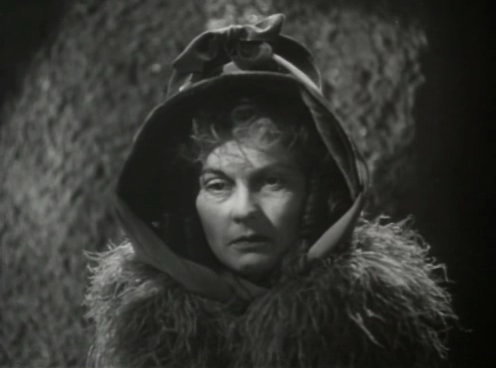
Emma’s decline into ruin is a product of the Hollywood Production Code then headed by Joseph Breen. The purpose of the Code was to censor any material deemed to be immoral before a film was granted a license to be exhibited.[xxvi] As we are shown in the film, Emma becomes financially indebted to Nelson after William Hamilton dies. When Nelson returns from a journey at sea and finds Emma living in a small flat in Piccadilly with her mother, he demands to know why she hasn’t told him of her situation or asked him for money. Emma is portrayed as being too proud—she is no longer the young girl who goes from one wealthy aristocrat to the next, as she was described at the beginning of the film. Not wanting to see her suffer, Nelson buys her a comfortable house in the country where they can live quietly together away from the scornful eyes of London society. When Nelson is called away to fight Napoleon in the Battle of Trafalgar and sustains fatal injuries, he uses his dying breath to bequeath his riches to his “dear Lady Hamilton.” His wish is not fulfilled, as evidenced by Emma’s impoverished existence at the end. As a moral to the story, Emma is punished to remind 1940s audiences of what happens to women who live unsavory lifestyles.
This is the scene that inspired Draper’s aforementioned notion that the film denies history:
After the denouement of the melodramatic tale of Lady Hamilton’s ill-fated love, the film cuts back to the framing story of the aged Lady Hamilton telling the tale to her female companion in prison. ‘And then? What happened after?’ the companion eagerly asks. ‘There is no “then.” ‘There is no “after.”
From Draper’s point of view, Emma’s declaration that her life (both as a famous figure and as the lover to England’s hero) ended with Nelson’s death confronts “the viewer with the film’s inability to locate itself in the viewer’s personal history.”[xxvii] However, Emma’s declaration can also be seen as her ultimate sacrifice. Britain had already been in the war for two years; sending one’s own husband, son, or lover off to war was a decision that British women were already experiencing in 1941, and American women would experience soon after. Emma knows she is sacrificing her happiness so that Nelson can face the enemy in a final challenge for victory. When Nelson is getting ready to leave, Emma offers to go back into the house and grab a blanket to keep him warm on his journey. He is gone when she returns, and she says with grave certainty, “He’ll never come back, mother.” She is correct. When Nelson’s first mate Hardy returns to tell Emma the news of Nelson’s death, the camera remains focused on her face to show her inner struggle. Her eyes are intent and glossy and she is breathing fast, but she remains silent. She knows she has done the right thing in letting Nelson go. The suppression of her desire for the benefit of England can therefore be seen as the definitive act of patriotism, serving as a link to connect her with female wartime audiences.
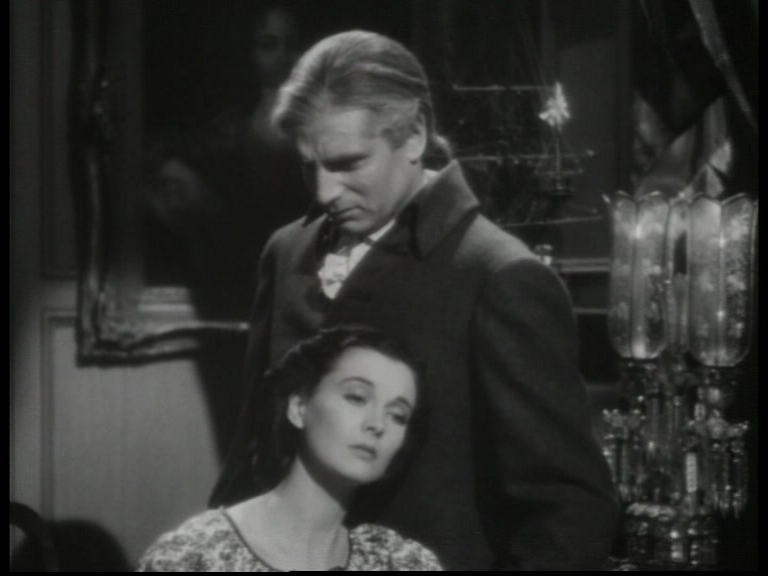
In contrast to Leigh, who was able to “give full reign to the mercurial temperament and star glamour she’d acquired” in Gone with the Wind and her next film Waterloo Bridge (Mervyn Leroy, 1940), Haskell describes Olivier as being “straightjacketed—not just by the stiff, weight-of–the-world gravity of a military man, but by the physical handicaps of injuries: the eyepatch and missing arm.” [xxviii] Although Olivier had, according to his biographer Anthony Holden, wanted to explore Nelson’s character with more psychological insight, he agreed that, given the underlying message of the film, it would be wise not to portray Nelson as anything other than the “cardboard hero required by the times.”[xxix] When viewed today, Olivier’s performance does seem overly theatrical, especially next to Leigh’s. Indeed, as Sarah Street notes, “links between British cinema and the London stage have been blamed for the uncinematic quality of many British films.”[xxx] However, when examined in the context of the time in which That Hamilton Woman is made, Olivier’s “stagy” performance works because it is exactly what the film required to express its message of propaganda.
When England declared war on Germany in 1939,Olivier, intensely patriotic, immediately wanted to go back to London and enlist in service. He mentions in a 1969 interview with TV host Michael Parkinson:
I was discouraged, along with everybody abroad, from going home… Something told me it was a mistake. We were persuaded by sort-of-ambassadorial circles that the thing to do was to stay there [in Hollywood] and keep the English face on the screen, and remind the Americans that we’re English people. My argument was yes, the might say, ‘Yes, it’s a nice face…but what’s it doing on the screen? Why isn’t it over there shooting a gun?’[xxxi]
Despite his frustrations at being unable to return to England at this time, That Hamilton Woman offered him the chance to project his patriotism onto the screen. It is also interesting to note that That Hamilton Woman was the first in a series of propaganda films (both “realist” and “heritage”) that Olivier leant his “educated voice” to during the war. Later titles include Words for Battle (Humphrey Jennings, 1941), The 49th Parallel (Michael Powell, 1941), The Demi-Paradise (Anthony Asquith, 1943), and his own Henry V (Laurence Olivier, 1945), often cited as the quintessential wartime “heritage” film.[xxxii]
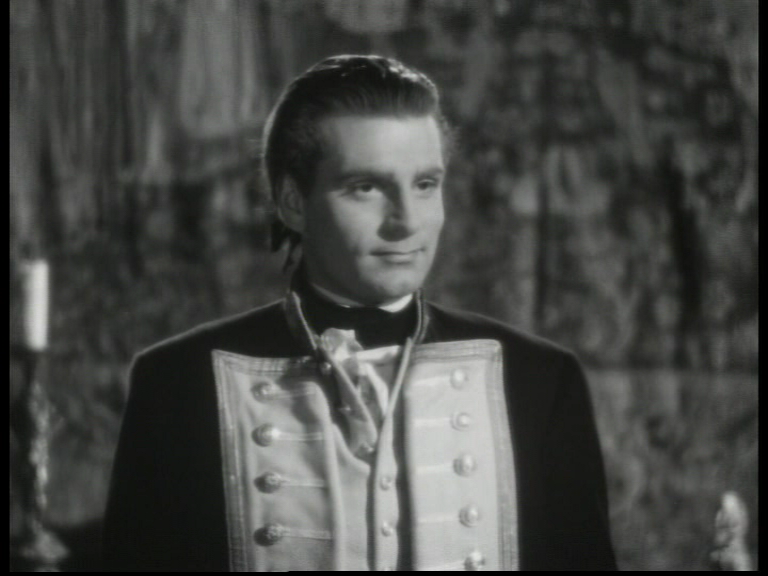
Olivier’s portrayal of Nelson is representative of the stoicism and restraint that Charles Barr says was so crucial to British films made during the war.[xxxiii] Rather than displaying emotions himself, Nelson is meant to conjure up the patriotic sentiments of other people (most notably audiences watching the film) by acting as a symbol of British national identity. His entrance in the film is signaled by a low-angle shot of the Union Jack flying proudly at the top The Agamemnon, accompanied by the song “Hail Britannia,” before we finally get our first glimpse of Nelson, decorated in his military honors and sitting statuesquely at the back of a rowboat as he is taken ashore by his faithful crew. Toward the end of the film, just before the Battle of Trafalgar, Nelson asks one of his shipmates to hoist flags that symbolically spell out a message to all of the sailors in the British fleet. As each flag is raised, a different sailor says what it means until the entire message is read aloud: “England expects every man to do his duty.” As Nelson lays dying in the hold of his ship after being struck by a French sniper’s bullet, Hardy comes to inform him that Napoleon has been defeated and Nelson whispers, “I have done my duty.” The sentiments of honor, duty, and even taking pride in laying down one’s life for one’s country and fellow soldiers in the name of victory and restoring peace were most likely sentiments that British servicemen were feeling in 1941.
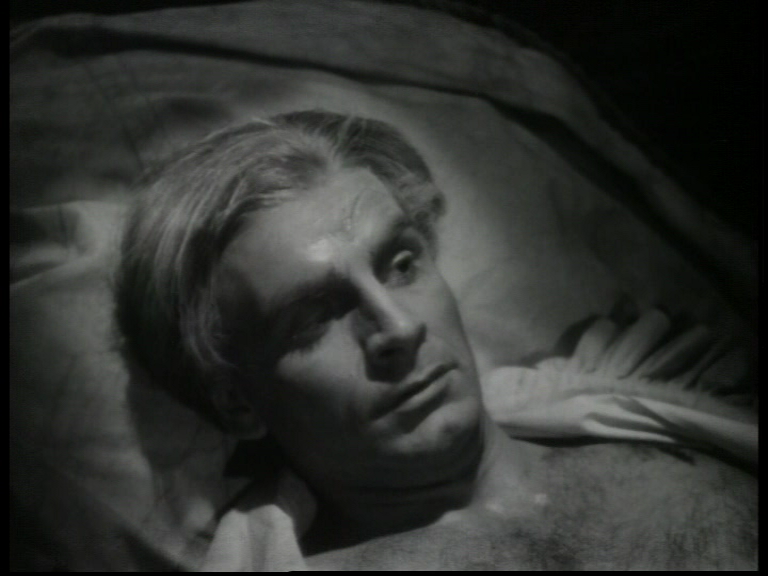
Nelson’s embodiment of nationalism is aided by Olivier’s theatrical background, which endowed him with the required “educated voice” mentioned above. Due to Nelson’s physical handicaps and the lack of psychological depth in the character, Olivier’s voice becomes his most powerful acting tool.[xxxiv] It proves most useful in Nelson’s speech to the Admiralty about not trusting Napoleon’s offered peace agreement. Perhaps coincidentally, this speech is also the most overt instance of pro-British propaganda in the film. After his victory in the Battle of Copenhagen, Nelson returns the Admiralty in London, where Lord Spencer tells him of Napoleon’s promise of peace. As if giving a speech in front of a theatre audience, Nelson exclaims in a commanding, authoritative but clipped voice:
Gentlemen, you will never make peace with Napoleon…Napoleon cannot be master of the world until he has smashed us up, and believe me, gentlemen, he means to be master of the world! You cannot make peace with dictators. You have to destroy them–wipe them out!
This scene, more than any other in the film, serves to tie the historical tale of Nelson and Emma to contemporary British affairs. Nelson’s labeling of Napoleon as a “dictator” has been pointed out as a thinly veiled reference to Adolph Hitler. Kulik even acknowledges that Winston Churchill himself may possibly have written this speech.[xxxv]
From a critical standpoint, Korda undertook too big a task in trying to combine so many elements. For some, the melodrama and propaganda angles never quite managed to successfully meld together. New York Times critic Bosley Crowther wrote:
In short, the whole film is just a running account of a famous love affair, told with deep sympathy for the participants against a broad historic outline of the times. Nelson is made to appear the great and important man that he was, with some especially timely opinions about dictators who would desire to invade England and “tear down that which other men have built up.” Lady Hamilton is represented as his constant and compelling heart’s balm. Perhaps if it had all been condensed and contrived with less manifest awe, the effect would have been more exciting and the love story would have had more poignancy. As it is, the little drama in the picture is dissipated over many expansive scenes; compassion is lost in marble halls. At no time did we really feel that this was the image of a deathless love.[xxxvi]
Dylis Powell, film critic for the Sunday Times later surmised, “One can understand the emotions stirred in the Churchillian sense of destiny. But for many of us Lady Hamilton (UK title) seemed conventional in romance and perfunctory in history; the love story thinned into propaganda.”[xxxvii]
Despite critical complaints, That Hamilton Woman did succeed in melding together history and the contemporary on many levels. It was a box office success, particularly in America where audiences were likely drawn in by its two big-name stars, their performances, as well as the love story played out on screen and in real life. Winston Churchill named it his favorite film.[xxxviii] And Korda was successful in getting Americans to take notice of the film’s underlying message; the US Senate saw through the costumes and biographical story, and set up an investigation committee in an attempt to charge the director with trying to incite America into war.[xxxix] Perhaps the best example of Korda’s success can be seen in the ways scholars and audiences view the film today. Whether reading it strictly as melodrama, propaganda, biography or a combination of all three, That Hamilton Woman continues to be a fascinating case study in war-time British-American cinema.
[i] Charles Barr, “Introduction: Amnesia and Schizophrenia,” in Charles Barr, ed., All Our Yesterdays: 90 Years of British Cinema (London: British Film Institute, 1985), 10.
[ii] Andrew Higson, “The Heritage Film and British Cinema,” in Andrew Higson, ed., Dissolving Views: Key Writings on British Cinema (London: Cassell, 1996), 233.
[iii] Barr, All Our Yesterdays, 12.
[iv] Sarah Street, Transatlantic Crossings British Feature Films in the USA (New York: The Continuum International Publishing Group Inc, 2002), 2.
[v] Ellen Draper, “Untrammeled by Historical Fact’: That Hamilton Woman & Melodrama’s Aversion to History,” Wide Angle 14 (January 1992): 59.
[vi] Alison McKee, “What’s Love Got to Do With It? History and Melodrama in the 1940s Woman’s Film,” Film & History: An Interdisciplinary Journal of Film and Television Studies 39.2 (Fall 2009): 13.
[vii] Karol Kulik, Alexander Korda The Man Who Could Work Miracles (London: W.H. Allen, 1975), 250.
[viii] Sue Harper, Picturing the Past: The Rise and Fall of the British Costume Film, (London: British Film Institute), 91.
[ix] Ian Christie, commentary on That Hamilton Woman (Alexander Korda, 1941), DVD, The Criterion Collection, 2009.
[x] Harper, Picturing the Past, 91.
[xi] Sarah Street, British National Cinema (London: Routledge, 1997), 157.
[xii] W. A. Darlington, Laurence Olivier (London: Morgan Grampian Books Limited, 1968), 38.
[xiii] Laurence Olivier, Confessions of an Actor (New York: Simon and Schuster, 1982), 100.
[xiv] Tom Devane, “Lady Hamilton,” Hollywood Magazine, March 1941. http://vivandlarry.com/oliviersarticle28.php
[xv] Molly Haskell, “From the Current: That Hamilton Woman: Real Love/Reel Love,” The Criterion Collection (Sept. 11, 2009), 1.
http://www.criterion.com/current/posts/1228-that-hamilton-woman-real-love-reel-love
[xvi] Haskell, “From the Current.”
[xvii] Haskell, “From the Current.”
[xviii] George F. Custen, Bio/Pics How Hollywood Constructed Public History (New Jersey: Rutgers University Press, 1992), 51.
[xix] Christie, DVD commentary.
[xx] Custen, Bio/Pics, 34.
[xxi] Christie, DVD commentary.
[xxii] Custen, Bio/Pics, 182.
[xxiii] Harper, Picturing the Past, 93.
[xxiv] Draper, “Untrammeled,” 58.
[xxv] Draper, “Untrammeled,” 58.
[xxvi] Kulik, Alexander Korda, 246.
[xxvii] Draper, “Untrammeled,” 59.
[xxviii] Haskell, “From the Current.”
[xxix] Anthony Holden, Olivier (London: Weidenfield and Micolson, 1988), 165.
[xxx] Street, British National, 152.
[xxxi] Laurence Olivier, “Cinema with Michael Parkinson,”1969, accessed December 19, 2010, http://cinema.vivandlarry.com/?p=235.
[xxxii] Barr, All Our Yesterdays, 12.
[xxxiii] Barr, All Our Yesterdays,11.
[xxxiv] Haskell, “From the Current.”
[xxxv] Kulik, Alexander Korda, 251.
[xxxvi] Bosley Crowther, “That Hamilton Woman,” New York Times, April 4, 1941, accessed December 19, 2010,
http://movies.nytimes.com/movie/review?res=9C07E6DE1E3BE33BBC4C53DFB266838A659EDE.
[xxxvii] Margaret Morely, ed., The Films and Faces of Laurence Olivier (England: LSP Books Limited, 1978), 24.
[xxxviii] Kulik, Alexander Korda, 249.
[xxxix] Kulik, Alexander Korda, 251.

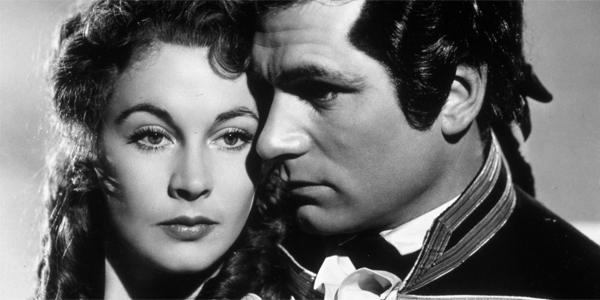
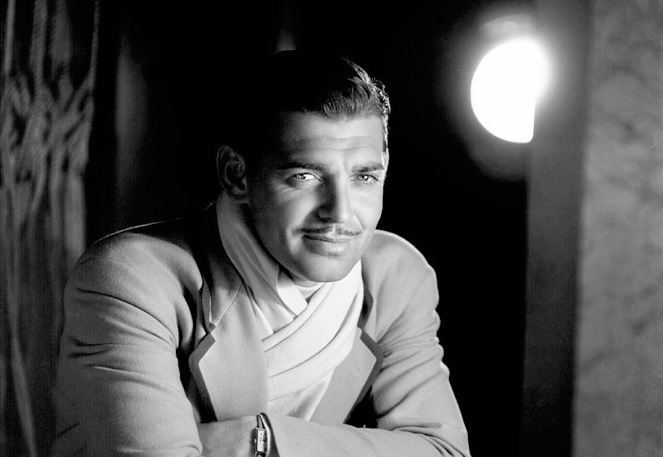

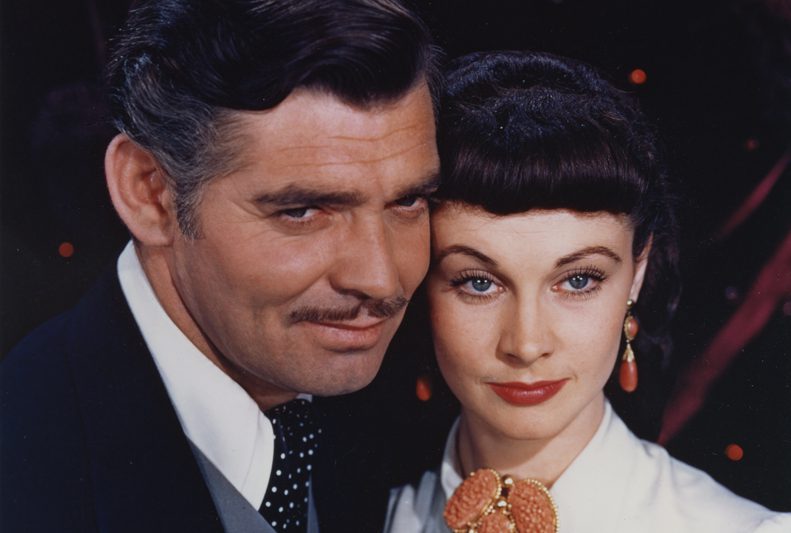
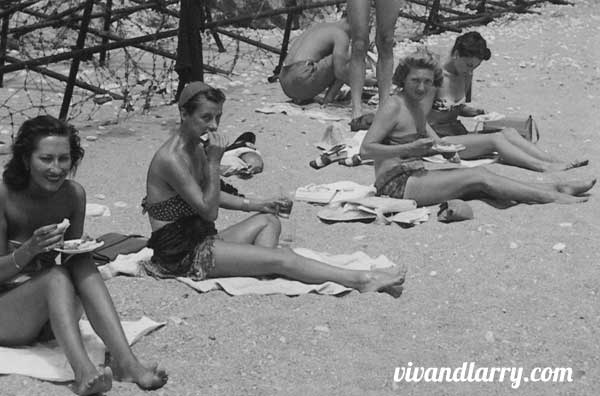
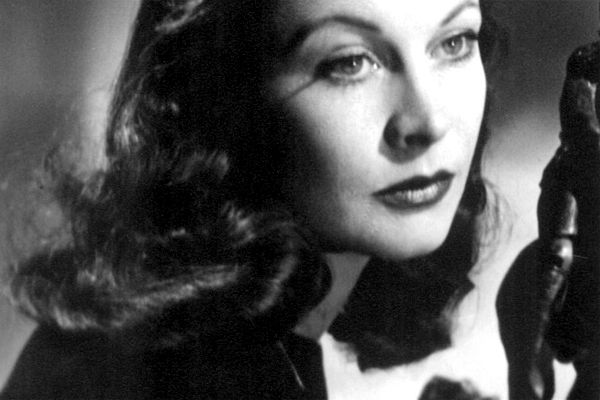
Amazing paper, absolutely fascinating. I don’t understand the woman’s reasoning for saying that the film, “denied history”. What a bizarre thing to say. It’s almost as if she’d prefer Nelson to be a “cardboard cutout hero” who didn’t have actual human emotions that people could relate to. Anyway, congrats honey. Fantastic paper.
Thanks so much! Yes, critics at the time did prefer Nelson’s cardboard cut-out hero because thats what they thought British film should be portraying: leave the emotions to the women! But then of course they didn’t like melodrama much. What Ellen Draper argued was that melodrama always has an aversion to history because the love story and manipulative, heightened emotions always get in the way of portraying history “accurately”
Wow Kendra, I now have a different perspective on “That Hamilton Woman”, what a fantastic read! Congrats on a great paper!
I certainly feel smarter after reading this! What I found most interesting was that Nelson’s character was purposefully limited to the cardboard cut-out hero. To me that’s where some of the problems with the melodrama come in. How can you have a good romance when one character is not fully fleshed out? This thought never came to me until I read this but with being purposefully ‘cardboard,’ Nelson is an archetype character rather than a truly individualistic one. Of course it all goes back to the purpose of the film to be a propaganda and Nelson is the character though which that is done. In the end it all works out and the film achieves its goal of effective propaganda but I can’t help but wonder what it would’ve been like if Olivier had been able to tap more psychologically into Nelson. So anyway, great paper! I love reading things that inspire new thought for me.
Thanks Sylvia and Molly!
@Molly–the flatness of the Nelson character had always bee an issue for me, as well. I think maybe Korda tried to do too much in combining so many thematic/genre elements that perhaps something got lost along the way. Critics–particularly British ones–actually liked the Nelson character best because it exemplifies what they perceived to be good british national identity–stoic and not showing much emotion. I feel this film is a lot more interesting after I did all that research. I see it in a new light now!
Great paper, Kendra, you really put your heart into your work and that’s make it all the more interesting! of course on films melodramas are always meant to be “woman’s pictures” , so no wonder Emma’s character outshines the Great Admiral (by the way, this is the italian title) but it’s also true that never, not even as Scarlett, has Vivien looked more beautiful and that, at that time, she was more at ease before the camera then her distinguished husband; anyway, the notion than Olivier portayd Nelson as an archetype on purpose put things in a completely new light.
.
My gosh, Kendra … I always knew you were a clever girl, but this paper is absolutely brilliant. I’ve been following your adventures in England faithfully (and your blogs are fascinating, by the way), but it’s such a treat to get a sample of what you’ve been up to academically. I won’t bother to say “keep up the good work”, because I don’t think it’s possible for you to do anything else, but I will tell you that it’s very exciting to see someone as talented as you find their niche and realize their potential. All the best to you as always, and thanks so much for sharing this! I loved every word of it.
I saw it at 7 and was in love. My heart went out to Nelson and I thought he was the most beautiful male imaginable. Still do.
Fascinating paper! I’ve long been a fan of Larry & Viv as well as Emma & Nelson and wrote a historical novel based on the latter. THAT HAMILTON WOMAN was always a favorite film for the way Larry & Viv’s lives parallelled those of Nelson & Emma, but the only thing that troubled me about the the film, after extensively researching Nelson & Emma’s lives for my novel was the way the film played fast and loose with the historical record of their biographies. And of course neither actor remotely resembles (physically) the historical figure they are portraying. But because I love all 4 people so much, this may be the only movie where I can forgive all the inaccuracies. Your essay is the first I have read of the difference in the acting styles between Viv & Larry and the fact that there was a deliberate difference for it. I don’t recall reading this in any of their creditable bios, though I do remember reading that the film was made for propaganda purposes. And of the nine gazillion times I have watched it, I have never thought much about the tonal difference in their styles, other than Larry was playing “The Hero” very much as an archetype. Thank you so much for this new insight.